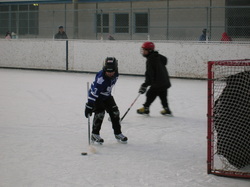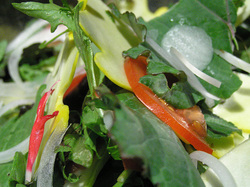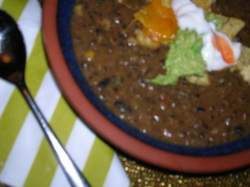With my son, I had what’s called a precipitous labour. Because it was so short, because he burst into the world mere moments after I staggered into a hospital birthing room, I tend to gloss over the pit of terror. In light of some of my friends’ stories of days-long ordeals, complications, surgical slicing and mean red scars, it’s always seemed wrong to complain.
When a break finally came, I managed to pull on my hideous pair of greige maternity pants, and then Steve and I fled to the hospital. Cue the squealing tires, and panic, nurses rushing, clothes peeled off. That is, until it all screeched to a halt. After a young, inexperienced doc examined me, he dismissed me, “Nope. Long way to go. Cervix hasn’t even softened yet.”
Mutely, embarrassed for me, the nurses melted away. And for a brief while then, I felt the fool. So I had misread the signals? These lightening bolts of pain riding through my body—this was just…just the beginning? “How will I do this?” I asked myself, dumbfounded that an hour into labour I already felt defeated. And in that moment I felt that sense of connection and terrible awe. How many women around the world and through the ages had come to this exact point? Amid my fierce contractions, which had never stopped, a second doctor popped in for another look. He was, I suppose, my knight in shining armour. What of the first doctor’s assessment and that decided lack of cervical softness? “People!” he said, “That is the baby’s head. Let’s move!”
The medical machine sprung back into action: a birthing room, monitors, me trying to manage the right position for the baby lifeforce bursting its way out. As if things couldn’t get any crazier, I noticed doctors turning tense, grabbing equipment. Zach’s heart rate, they informed me, had started plummeting. And next I felt the agonizing stabs of some obstetrical-grade vacuum. With the suction helping Zach along, it was all yelling and pushing from me. And then it was over. He had arrived, my beautiful baby, safe and sound. Typical of babies from fast labours, Zachary was all pink and lovely, while I was almost unrecognizable—bloody, ghastly white, swollen and puffy, like something you’d see in a boxing ring.
At this time of year, Mother’s Day, like every mother, I’m filled with these messy memories of my baby’s birth. I’m also thankful that I laboured in a facility that offered a medical team, second opinions (!!), clean surroundings, and lifesaving meds and monitoring and equipment. Our system is not perfect. And yet compare Canada to a country like Uganda. In the developing world, mothers are hundreds of times more likely to die in childbirth. And at this most exciting but potentially frightening juncture, many women also face terrible indignities. Consider: “In Sub-Saharan Africa, for example, a woman has a lifetime risk of 1 in 39 of dying from pregnancy related complications…One in four women who die during childbirth simply bleed to death. This can often be prevented by a medication that costs less than 99 cents.”
Having become more aware of the global maternal health issue, our family has started participating, every Mother’s Day weekend, in the Toronto leg of the country-wide Save the Mothers annual walk. The walk raises funds for the work of Dr. Jean Chamberlain Froese. Canadian and Hamilton-trained, Jean and her family spend most of their year in Uganda, where she focuses on a local development approach, training and supporting local medical staff, and assisting women in labour.
For me, our family’s annual walk together is deeply meaningful. My son, happy and healthy, walks beside me, and we pass our local hospital along the way. The walk, a joyful, social thing, also has an occasional hush. Most profoundly, the walk mimics the distance a woman in the developing world might have to walk to hospital. This forms a powerful backdrop for my first-world Mother’s Day pressures—where to have brunch, what to buy for my own mom, and how to escape that Hallmark-imposed feeling I always sense nipping at the edges of this day?
We’ll be walking again this Saturday. If you want to join in, the walk is in East Toronto and there’s a great party at the end with a local high-school Steel Drum Band and my hubby Steve at the BBQ (link is below). Or if you’d like to sponsor us again this year and help women and babies in Uganda receive adequate obstetrical care, that link is below too.
Thanks for listening and I wish all of you a very Happy Mother’s Day.
Links:
- Facts from Save The Mothers: http://www.savethemothers.org/learn-the-issues/
- To see details about the Toronto event, click here.
- To sponsor me, click here.
- To read my article in the latest issue of Herizons magazine about socially conscious gifts for Mother’s Day, click here.






 RSS Feed
RSS Feed
